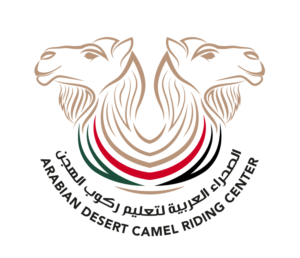Healing in the Camel Saddle: How Camels Help Relieve Stress
Peace and clarity riding our calm camels, whose gentle movements naturally release tension
Everyone experiences moments when life doesn’t flow as smoothly or fulfilling as we´d wish for. Sometimes we find ourselves overwhelmed, stuck in our daily routine that makes us exhausted, or even feeling depressed. This pressure we feel inside us is called stress-a powerful force that can affect our mindset, self-love in negative ways to the point where our well-being is in danger.
Stress can appear in different ways and come from different sources like the demands of daily routines, challenging work environment or even the way we perceive and response to different situations. According to the World Health Organization (WHO), one in eight people worldwide lives with a mental health disorder, which are generated by chronic stress and anxiety. It’s a reminder that are lot of people dealing with this struggle and it’s important to take stress seriously to improve our mental well-being and our way of perceiving.
As Dr. Tedros Adhanom Ghebreyesus, Director-General of the WHO, said,
” Mental health is the defining challenge of our time. We must prioritize it in our health systems, policymaking, and communities. Taking small steps toward better mental health, whether through self-care, seeking support, or simply acknowledging the effects of stress, can go a long way in restoring balance and clarity in our lives.”
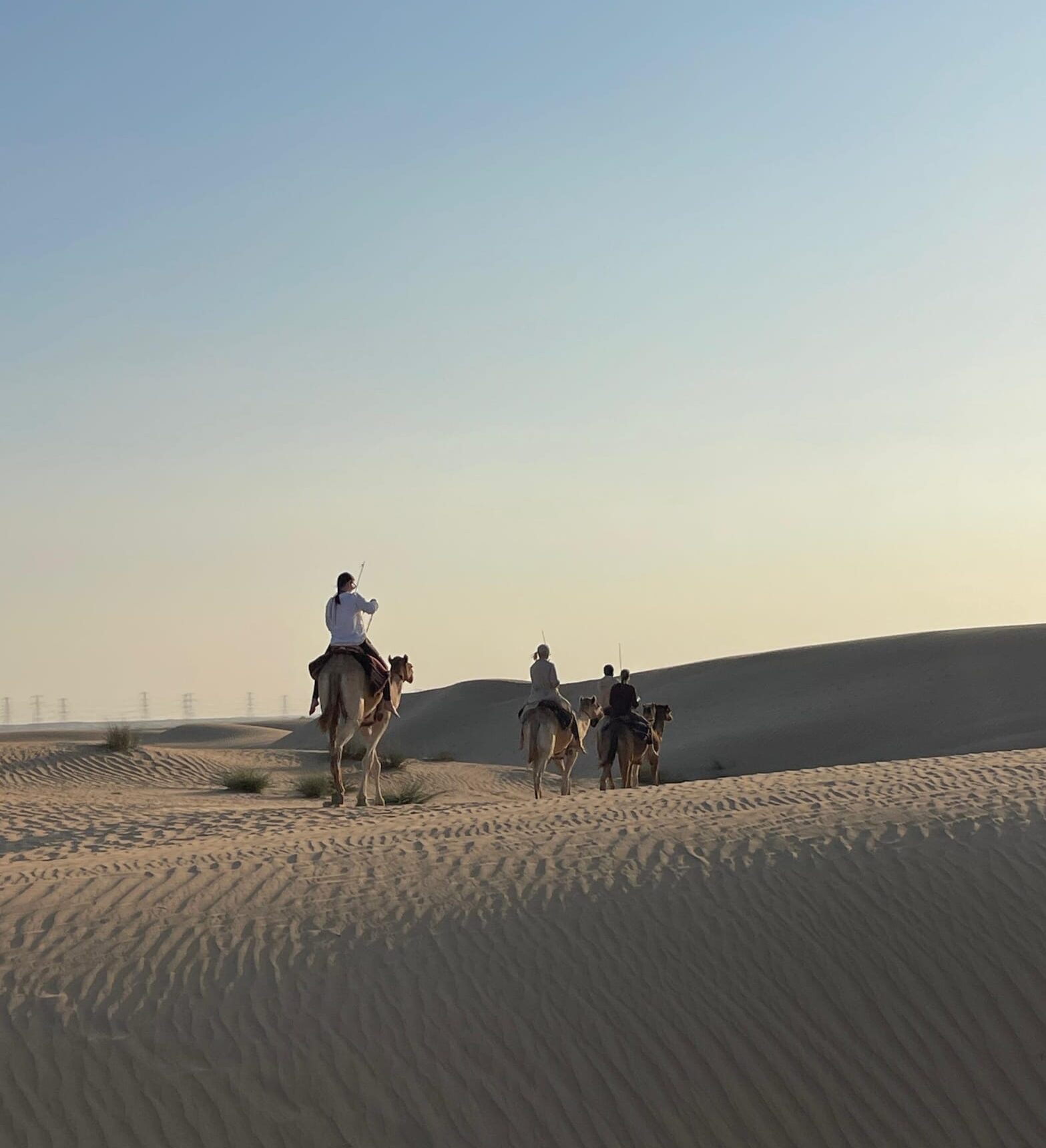
There are many ways to deal or treat stress, wherever the best medicine is by connecting with nature and animals.
The Arabian Desert Camel Riding Centre (ADCRC) in Dubai works closely with the camels, observing their behavior and graceful movements. Working with these interesting creatures allows to reflect on the qualities of these animals and how they affect our emotional state. Camels are gentle, calm creatures that naturally help us relax and find inner peace. Their serene presence creates a peaceful environment, grounding us and help us to release stress. Simply being around them can inspire a sense of tranquility, encouraging us to mirror their calmness.
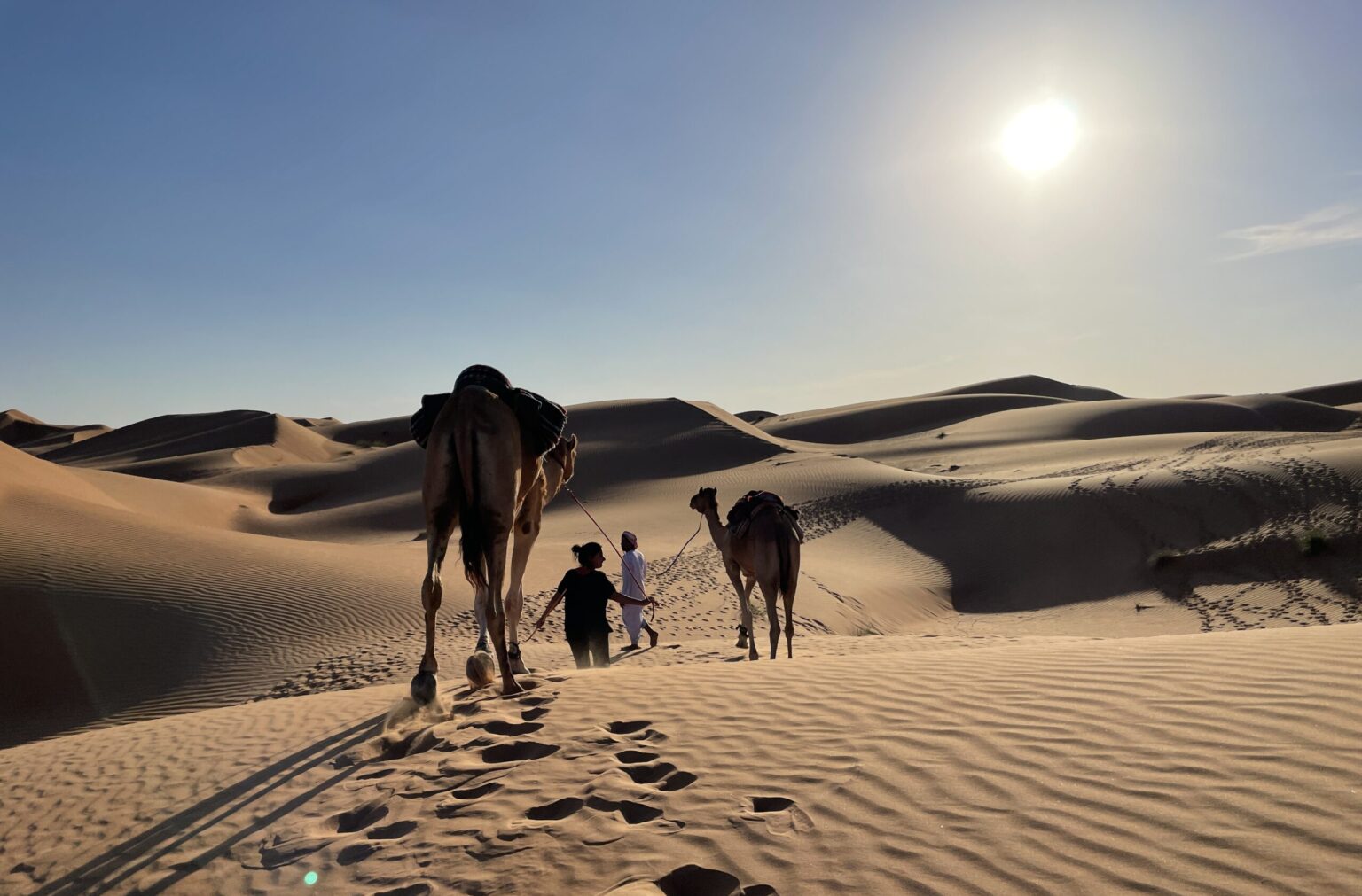
One of the most unique aspects of camels is their rhythmic, swaying motion, which has a soothing effect on those who ride them. Their smooth, steady gait feels almost meditative, like being gently rocked. This movement can help release physical tension, easing both the body and mind.
Camels also embody qualities of patience and endurance. Having thrived in harsh desert conditions and endured long journeys, they remain balanced and calm even in challenging environments. These traits inspire emotional stability and inner peace, reminding us of our own ability to cope with life’s challenges and find calm amidst adversity.
Also riding or walking alongside a camel encourages mindfulness, the patience of being fully present in the moment without drifting away and getting lost in unhealthy overthinking. You can focus on your breathing with different techniques and on your own body sensations. This practice is known to reduce stress and anxiety by breaking the cycle of constant thoughts.
In general, is interacting with animals such as camels helpful because it lowers cortisol (stress hormone) levels and increases oxytocin (relaxation hormone). It happens by being around animals like petting them or observing their behavior which triggers emotional response. The fact that all of this happens in the nature is even better. Spending time in the desert or open landscapes, allows us to disconnect from daily life, live in the moment and control our negative thoughts, it will improve our mood.
All in all, camels help reduce inner stress by offering a combination of calm energy, rhythmic movements and connection with nature. Whether it’s through riding or simply spending time with these gentle creatures, camels provide a powerful therapeutic experience that can significantly reduce stress and promote overall well-being.
Feel like you could use a camel therapy session? See our activity schedule below and click on the button.
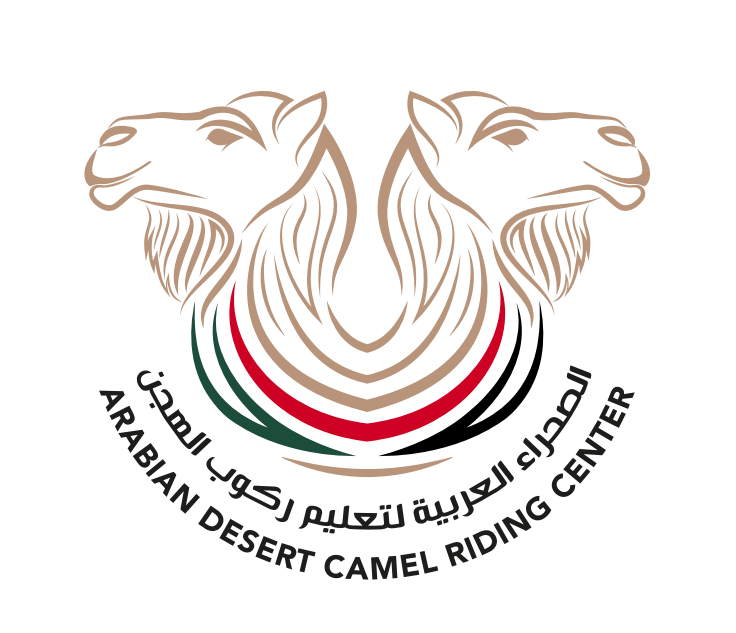
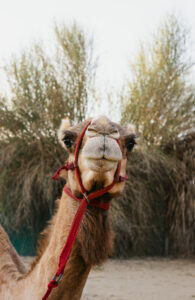 New here?
Join our newsletter for camel updates and unlock an exclusive offer for your first booking.
New here?
Join our newsletter for camel updates and unlock an exclusive offer for your first booking.
